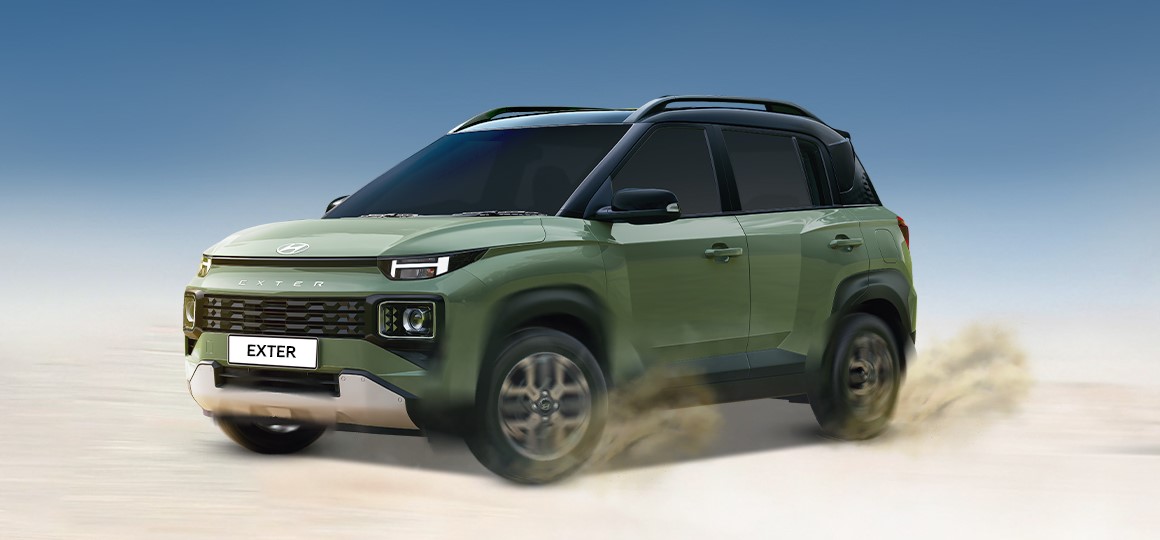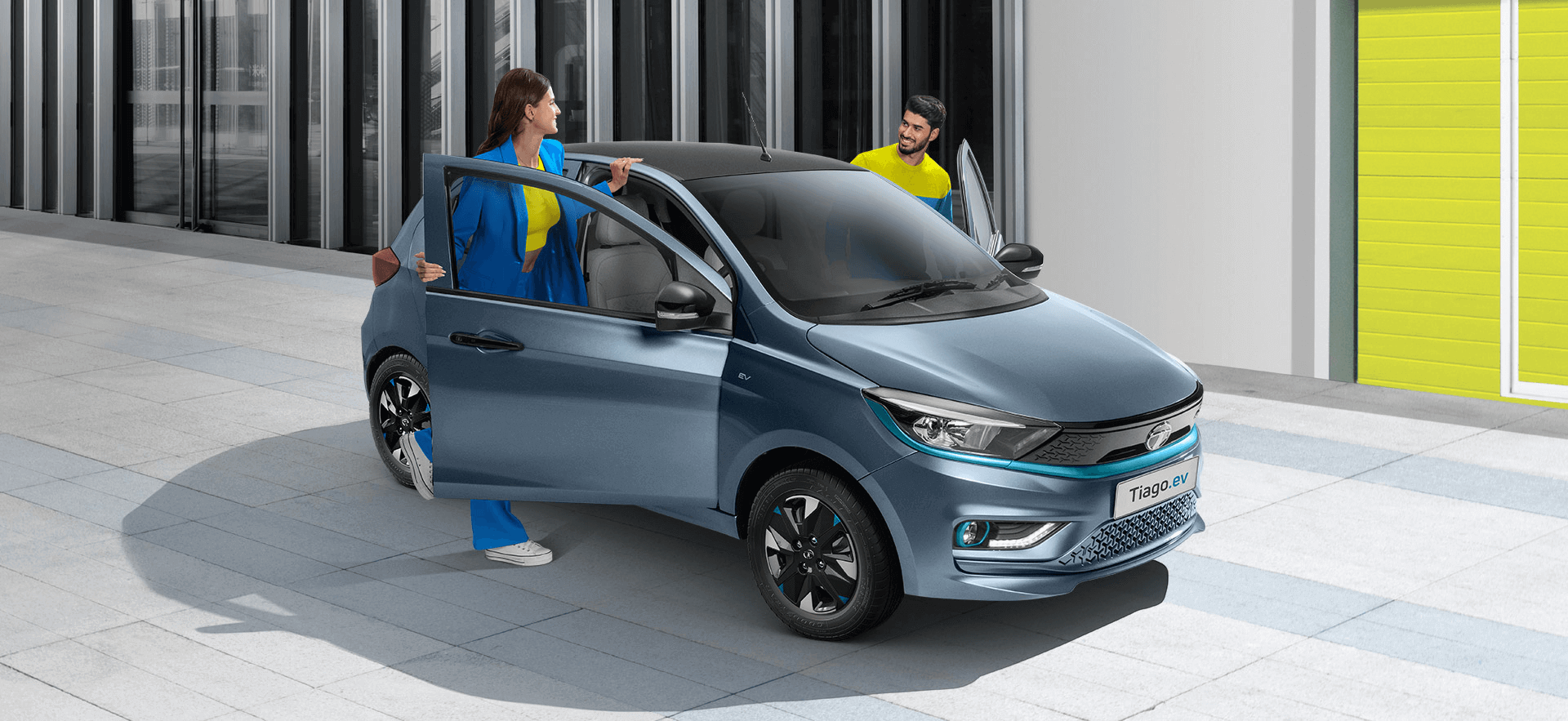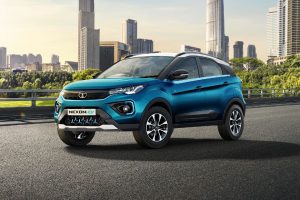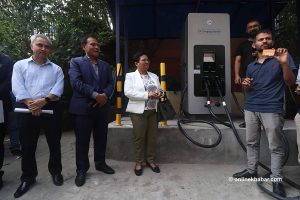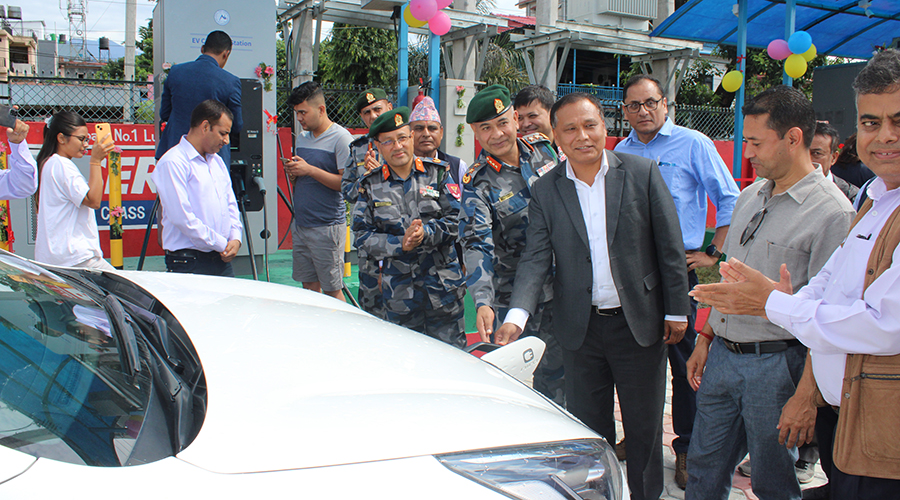
With the EV market experiencing rapid growth, its impact is unmistakably evident in Nepal. While the rise of EVs is likely to change the way people travel, there are a few cons that have mostly to do with the EV ecosystem. One major drawback is the insufficient number of charging stations in Nepal.
This year’s NADA Auto Show saw how EVs have taken centre stage. The auto expo featured a range of vehicles, from SUVs to compact mini cars and even 15-seater micro vans, highlighting the growing popularity and prevalence of EVs in Nepal. In response to this surge in the EV market, the government has also introduced new tax systems and regulations pertaining to them. The need for the hour, however, is charging stations.
Any country which wants to fully transition to EVs will need a lot of charging stations to cater to the demand that is to come. Take the US as an example. The country has charging stations in almost every town and city. Notably, companies like Tesla have established over 40,000 charging stations across the country, significantly augmenting accessibility.
Emulating that, many car companies like TATA, BYD, Hyundai and MG have set up charging stations in Nepal. Along with that, the Nepal Electricity Authority (NEA) has also set up charging stations in Nepal with 51 fast charging stations being built on the main highways across the country.
According to the Authority, a total of 51 fast charging stations for electric vehicles have been constructed across all seven provinces. This initiative was made possible through the combined investment of the authority, a concessional loan from the Asian Development Bank, and technical assistance provided by the Norwegian government as part of the electric vehicle charging infrastructure development project.
Here are the locations of these fast charging stations in Nepal:
NEA charging stations in Nepal
| S.N. | Location | District | Number of charging stations |
| 1 | Dharke | Dhading | 2 |
| 2 | Mugling | Chitwan | 1 |
| 3 | Sajha Sewa Balkhu | Kathmandu | 2 |
| 4 | Sajha Sewa Pulchowk | Lalitpur | 1 |
| 5 | Nepal Bidhut Pradhikaran, Ratnapark | Kathmandu | 1 |
| 6 | Nepal Police Club, Bhrikutimandap | Kathmandu | 1 |
| 7 | Paras Buspark | Chitwan | 2 |
| 8 | Khurkot | Sindhuli | 2 |
| 9 | Sindhuli Buspark | Sindhuli | 1 |
| 10 | Ilaka Prahari Karyalaya, Bardibas | Mahottari | 2 |
| 11 | Hariwan | Sarlahi | 2 |
| 12 | Inaruwa Buspark | Sunsari | 1 |
| 13 | Prahari Petrol Pump, Lahan | Siraha | 2 |
| 14 | Kalika Fuel Centre, Malepatan, Pokhara | Kaski | 2 |
| 15 | Paryatak Buspark Pokhara | Kaski | 1 |
| 16 | Damak Buspark | Jhapa | 2 |
| 17 | Belka Municipality | Udaypur | 2 |
| 18 | Birtamod Buspark | Jhapa | 2 |
| 19 | Surkhet Buspark | Surkhet | 2 |
| 20 | Hetauda, Ratomate | Makwanpur | 2 |
| 21 | NEA Training Center Complex, Kharipati | Bhaktapur | 1 |
| 22 | Prahari Petro Pump, Samakhusi | Kathmandu | 2 |
| 23 | Begnas Tal, Pokhara | Kaski | 1 |
| 24 | Butwal Buspark | Rupandehi | 2 |
| 25 | Itahari | Sunsari | 1 |
| 26 | Biratnagar | Morang | 1 |
| 27 | Kohalpur New Buspark | Banke | 2 |
| 28 | Dhagadi | Kailali | 2 |
| 29 | Trisuli Hawa Ghar | Nuwakot | 1 |
| 30 | Battar, Trisuli | Nuwakot | 1 |
| 31 | Kushma | Parbat | 1 |
| 32 | Lamahi bus park | Dang | 2 |
| 33 | Lamki | Kailali | 1 |
| Total | 51 |
Collective effort to build an ecosystem
Other than these there are many other charging stations in Nepal set up by different car companies. TATA Motors has set up more than 150 fast and slow charging stations in Nepal.
The company has been actively increasing the number of charging points with 26 DC fast charging places and over 130 AC charging stations. TATA’s electric lineup includes the popular TATA Nexon and the TATA Tigor EV. Now the new TATA Tiago EV is also taking over the market.
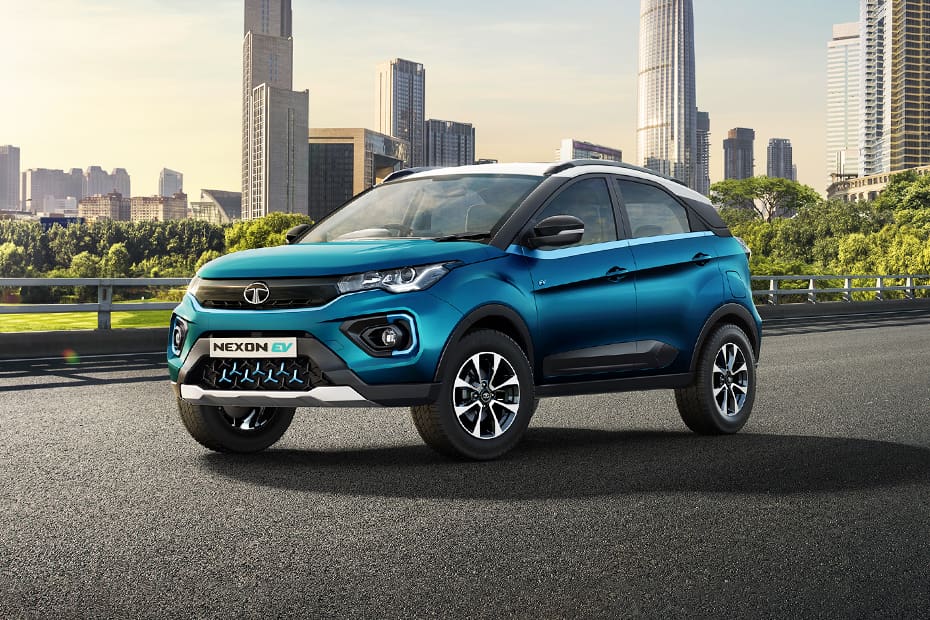
Hyundai is another prominent player in the electric car market in Nepal, offering models like the Hyundai Kona and Hyundai Ioniq 5. To ensure their customers do not face hassle with travelling, Hyundai has set up 43 charging stations in Nepal, and there are plans for further expansion in the near future.
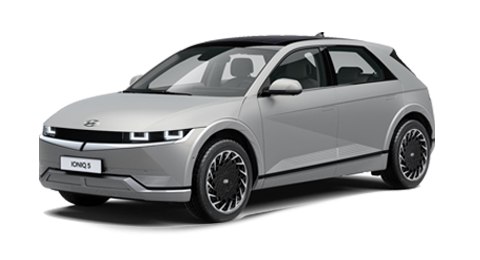
With the recent release of two new electric cars, MG has been silently gripping the electric market. The MG ZS EV is a popular mid-range option in Nepal with the facelift version also being popular instantly. MG has 17 charging stations in Nepal and is further increasing in the near future.

CG’s Neta V is another popular option in the electric car market this year. People have loved the hatchback with a nice interior and infotainment system. CG has 16 charging stations in Nepal.
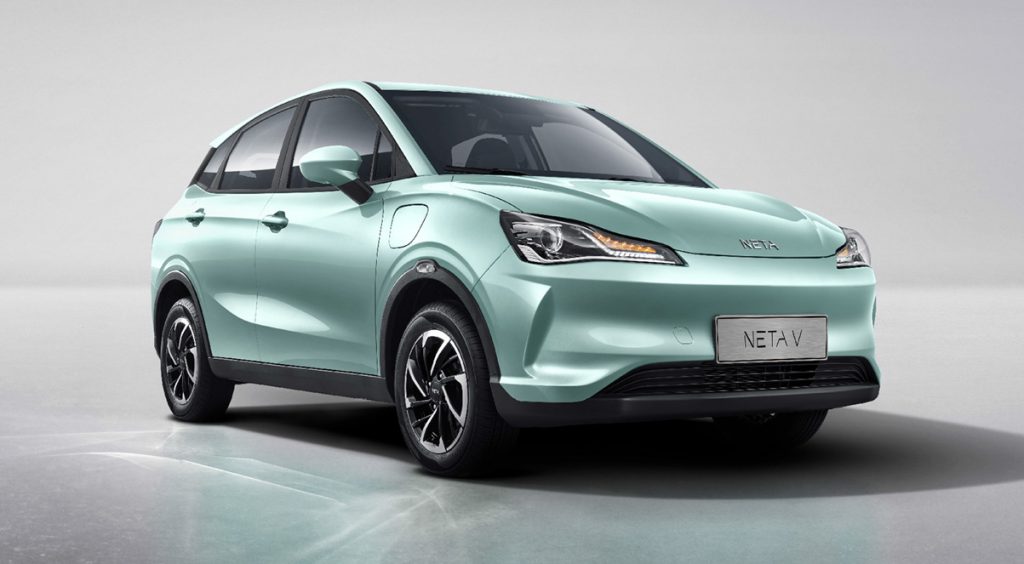
BYD’s E6 and the BYD Atto 3 have already gained a lot of attention since their launch. To cope, BYD has installed 14 charging stations in Nepal.

Need more charging stations

Even though there are a lot of charging stations now, the ratio of EVs to charging stations is still less in Nepal. To tackle these situations, there must be proper planning and installation of new charging stations with all types of dedicated chargers so that other types of EVs can also charge.
In the current charging stations in Nepal, it is crucial to maintain a consistent and stable flow of electricity to prevent any potential damage to the EVs. Additionally, these stations should feature a user-friendly interface, compatible connectors, and ample parking space to accommodate multiple EVs charging simultaneously. This ensures a smooth and convenient charging experience for users.
But what about proper and efficient charging? EV owners and enthusiasts still have little knowledge about the cars they own. EVs do not require much maintenance but still need to be taken care of in order for full experience.
In order to efficiently charge here are a few tips to help you it.
1. Use Dedicated Level 2 Chargers
Whenever possible, use a dedicated EV charger rather than a standard electrical outlet. Level 2 chargers are faster and more efficient. Level 2 chargers primarily include either 3.3 kW or 7.7 kW power output.
2. Install a Home Charging Station
Consider installing a Level 2 home charging station in a convenient location, such as your garage, for quicker and more accessible charging. It can be really helpful if you are a daily driver and help you replenish the lost battery easily.
3. Know Your EV’s Specifications
You should know your EV’s charging capabilities, including maximum charging rate and compatible connector types. If the battery has a maximum charging rate of suppose 55 kW and you put it in a DC fast charge of 150 kW, battery problems might occur. Connector types also differ accordingly so the use of a proper connector or you can carry one on the trunk of your car.
4. Monitor State of Charge (SoC)
Monitor your EV’s battery level frequently to plan your charging needs and prevent it from dying.
5. Avoid frequent and full 100% rapid charging
Limit frequent use of rapid charging, reserving it for long trips and occasional needs to prevent battery degradation. Opt for charging up to approximately 80% of your EV’s battery capacity, avoiding a complete 100 per cent charge. This strategy capitalises on the advancements in lithium-ion batteries and enables the EV’s regenerative braking system to utilise the excess kinetic energy by storing it within the remaining battery capacity.





